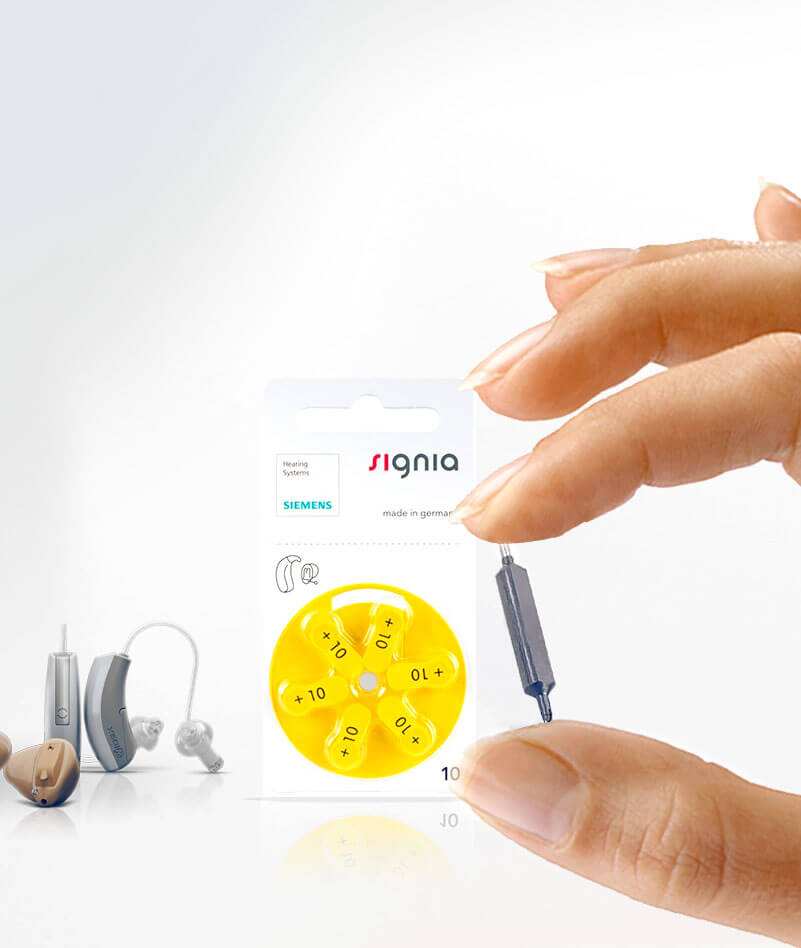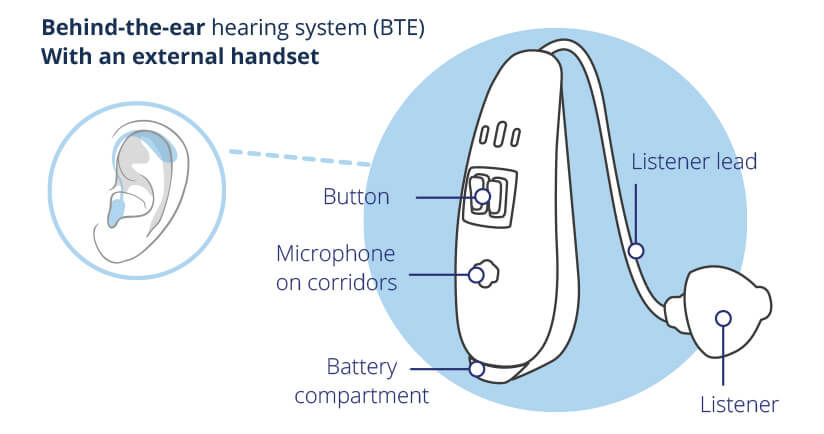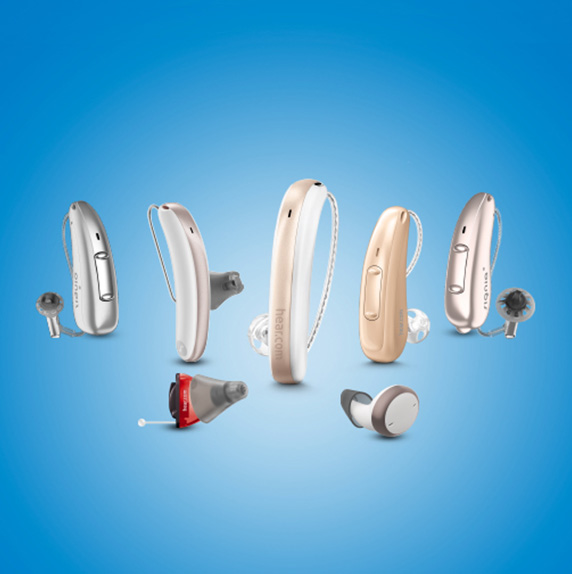
Smart hearing aids from hear.com - world's leading hearing care provider
Hearing aid batteries
Hearing aids are small, high-performance computers that pack in a lot of advanced technology. Similar to cars, they differ in size and built-in electronics. And just like cars, they need to be supplied with energy to ensure proper functionality. Hearing aid batteries are for hearing aids what fuel is for cars.
Table of Contents
- How do hearing aid batteries work?
- Which batteries are right for your hearing aid?
- How long do hearing aid batteries last?
- Hearing aids with rechargeable batteries
How do hearing aid batteries work?
We typically use button cells, (which are counted among micro batteries) for hearing aids. As their name suggests, they are reminiscent of a commercially available button due to their small, round and flat design. While mercury-zinc batteries were primarily used in the past, today it is zinc-air systems that are characterized, among other things, by their long service life.
Hearing aid batteries are mainly available in four different sizes: 10, 312, 13 and 675. The following rule of thumb applies: the larger the battery, the more energy it can provide. The choice of the right battery for your own device is dictated by the design of the respective hearing aid and depends on the required energy.
The zinc-air systems used work according to a simple basic principle: air penetrates the housing through holes incorporated in the battery surface and combines there with the zinc it contains, creating zinc oxide. The result of this chemical reaction is energy, which takes into account the necessary power supply. To ensure that this reaction does not occur until the hearing aid batteries are inserted, the holes are sealed with a colored protective film at the factory. This prevents air from entering the openings and combining with the zinc. After removing the foil and inserting it into the hearing aid, it may take a moment, depending on the battery, before the power supply is guaranteed.
Which batteries are the right ones for my hearing aid?
Not every battery can be used in every hearing aid. The right size is crucial. Some devices can only be operated with type 10 hearing aid batteries, others only with the 675 variant. Different types of hearing aid batteries can be easily identified using a standardized color scheme for the protective film: yellow, brown, orange and blue (with increasing battery size).
How long do hearing aid batteries last?
How often you need to change the batteries in your hearing aid depends on the size of the battery, the performance of your hearing aid and how you use your hearing aid. When worn every day, the batteries can last from 3-5 days to 3 weeks, depending on the model.
The alternative to hearing aid batteries: the rechargeable battery
As with other electronic devices that are operated with batteries, hearing aid wearers can also use a rechargeable battery for energy supply. The big advantage of an integrated battery system is that there is no need to change the hearing aid batteries.
But even those who have a hearing aid without an integrated battery can benefit from rechargeable batteries. Because there are also rechargeable batteries for hearing aids in the size of commercially available button cells.
Either a manufacturer-specific variant – such as Signia offers – or a universal charging station is used for the charging process.
If you are interested in a hearing aid with an integrated rechargeable battery, our experts will be happy to help you over the phone.
Correct storage of hearing aid batteries is important

When not in use, the batteries should not be stored too cool or too warm. Storage at room temperature is ideal to ensure the longest possible energy potential. You must take care to ensure that the protective film is not damaged, as otherwise air can penetrate and the chemical processes are set in motion that lead to the discharge of the hearing aid batteries.





